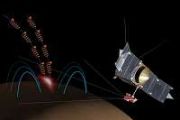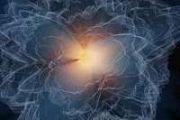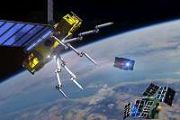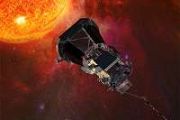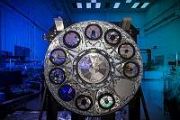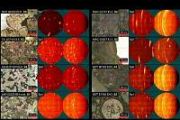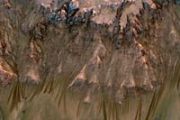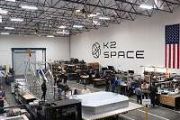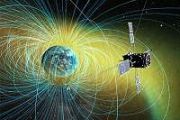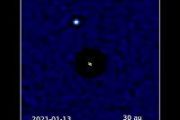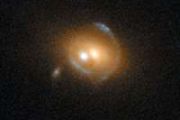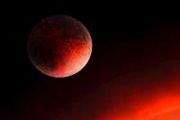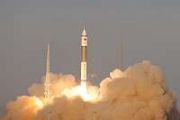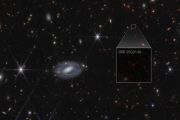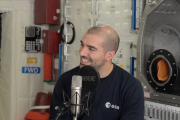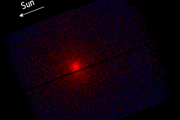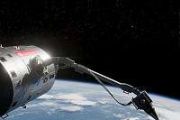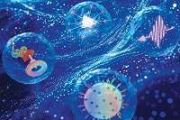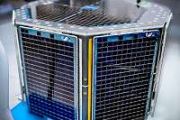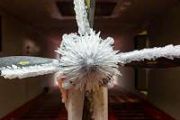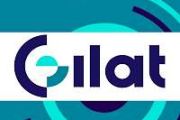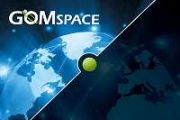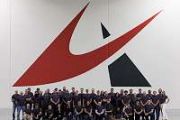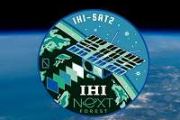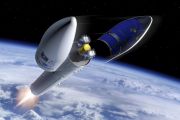
Copernical Team
New rockets, more spacecraft to take flight in 2023 from Space Coast
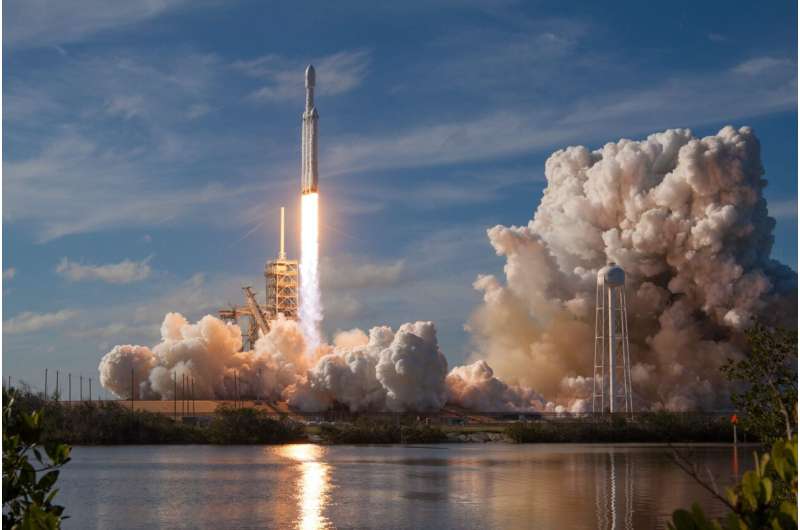
It's slated to be a busy year of rocket launches from the Space Coast with a pace that could introduce some new names and set new records.
Launch pads at both Kennedy Space Center and Cape Canaveral Space Force Station have been hitting a pace of more than one launch a week, finishing up 2022 with 57 rockets that made it to space.
That pace could be in line to nearly double as more launch service providers set up shop in Brevard County, said Frank DiBello, President and CEO of Space Florida, the state's aerospace economic development agency.
"How many can we sustain? We're building and investing, not just us alone, but the Space Force and NASA," he said. "And commercial contractors are investing in infrastructure that should be able to support 100 launches a year. That was our plan. I think we want the capability to be able to do two, two-plus a week."
A big chunk of that will come from SpaceX, which continues to roll out its Falcon 9 rockets like dominoes, but 2023 should also treat the Space Coast to several appearances of the powerhouse Falcon Heavy.
NASA: New topography satellite masts unfurl successfully
 NASA said on Wednesday that the large mast and antenna panels on its new Surface Water and Ocean Topography satellite successfully unfurled last week over a four-day process.
The satellite, also known as SWOT, was designed to capture precise measurements of the height of water in Earth's freshwater bodies and the ocean. It will also collect data on lakes and reservoirs larger than 15 ac
NASA said on Wednesday that the large mast and antenna panels on its new Surface Water and Ocean Topography satellite successfully unfurled last week over a four-day process.
The satellite, also known as SWOT, was designed to capture precise measurements of the height of water in Earth's freshwater bodies and the ocean. It will also collect data on lakes and reservoirs larger than 15 ac Precise FAST observations reveal circular polarization in active repeating fast radio bursts
 A research team led by Prof. LI Di from the National Astronomical Observatories of the Chinese Academy of Sciences (NAOC) has revealed circular polarization in active repeating fast radio bursts based on precise observations of the Five-hundred-meter Aperture Spherical Telescope (FAST).
Fast radio bursts (FRBs) are the most luminous radio flashes in the universe. The estimated equivalent e
A research team led by Prof. LI Di from the National Astronomical Observatories of the Chinese Academy of Sciences (NAOC) has revealed circular polarization in active repeating fast radio bursts based on precise observations of the Five-hundred-meter Aperture Spherical Telescope (FAST).
Fast radio bursts (FRBs) are the most luminous radio flashes in the universe. The estimated equivalent e SPIDER launches from Antarctica
 A team of scientists including physicist Johanna Nagy at Washington University in St. Louis successfully launched a balloon-borne experiment studying the early universe on Dec. 21. The instrument, called SPIDER, was carried aloft by a scientific balloon from its launch pad in Antarctica.
Nagy, an assistant professor of physics in Arts and Sciences, is one of a team of scientists who will u
A team of scientists including physicist Johanna Nagy at Washington University in St. Louis successfully launched a balloon-borne experiment studying the early universe on Dec. 21. The instrument, called SPIDER, was carried aloft by a scientific balloon from its launch pad in Antarctica.
Nagy, an assistant professor of physics in Arts and Sciences, is one of a team of scientists who will u Chinese commercial space company to launch stackable satellites
 China's private company GalaxySpace is accelerating the research and development of flat-panel stackable satellites, for rapid construction of a satellite internet constellation.
GalaxySpace said the design enables dozens of satellites to be stacked on top of each other like tablet personal computers and be launched at the same time on a single rocket. It can greatly improve the use effici
China's private company GalaxySpace is accelerating the research and development of flat-panel stackable satellites, for rapid construction of a satellite internet constellation.
GalaxySpace said the design enables dozens of satellites to be stacked on top of each other like tablet personal computers and be launched at the same time on a single rocket. It can greatly improve the use effici Researchers discover solar wind-derived water in lunar soils
 Due to its crucial importance in future space exploration, the abundance, distribution and origin of lunar surface water have received a lot of attention recently.
A joint research team from the National Space Science Center (NSSC) and the Institute of Geology and Geophysics (IGG), both affiliated with the Chinese Academy of Sciences (CAS), have discovered that the Chang'e-5 lunar soil gra
Due to its crucial importance in future space exploration, the abundance, distribution and origin of lunar surface water have received a lot of attention recently.
A joint research team from the National Space Science Center (NSSC) and the Institute of Geology and Geophysics (IGG), both affiliated with the Chinese Academy of Sciences (CAS), have discovered that the Chang'e-5 lunar soil gra Falcon 9 rocket launches 54 Starlink satellites
 A Falcon 9 rocket carrying 54 Starlink Internet satellites launched from Florida on Wednesday as part of a mission to begin populating a new orbital shell authorized by federal regulators.
The rocket launched from Cape Canaveral Space Force Station at 4:34 a.m. The mission was SpaceX's 60th of the year, nearly double the total from last year. One more launch is scheduled for the end of
A Falcon 9 rocket carrying 54 Starlink Internet satellites launched from Florida on Wednesday as part of a mission to begin populating a new orbital shell authorized by federal regulators.
The rocket launched from Cape Canaveral Space Force Station at 4:34 a.m. The mission was SpaceX's 60th of the year, nearly double the total from last year. One more launch is scheduled for the end of NASA, SpaceX to Study Hubble Telescope Reboost Possibility
 he non-exclusive SpaceX study regarding the possibilities of reboosting the Hubble Space Telescope is ongoing. On Thursday, Dec. 22, 2022, NASA issued a Request for Information to seek additional information about commercial capabilities available to reboost a satellite in orbit, using Hubble as a demonstration, at no cost to the government.
There are no plans at this time for NASA to cond
he non-exclusive SpaceX study regarding the possibilities of reboosting the Hubble Space Telescope is ongoing. On Thursday, Dec. 22, 2022, NASA issued a Request for Information to seek additional information about commercial capabilities available to reboost a satellite in orbit, using Hubble as a demonstration, at no cost to the government.
There are no plans at this time for NASA to cond The world's largest turbulence simulation unmasks the flow of energy in astrophysical plasmas
 Researchers have uncovered a previously hidden heating process that helps explain how the atmosphere that surrounds the Sun called the "solar corona" can be vastly hotter than the solar surface that emits it.
The discovery at the U.S. Department of Energy's (DOE) Princeton Plasma Physics Laboratory (PPPL) could improve tackling a range of astrophysical puzzles such as star formation, the o
Researchers have uncovered a previously hidden heating process that helps explain how the atmosphere that surrounds the Sun called the "solar corona" can be vastly hotter than the solar surface that emits it.
The discovery at the U.S. Department of Energy's (DOE) Princeton Plasma Physics Laboratory (PPPL) could improve tackling a range of astrophysical puzzles such as star formation, the o NASA, Alaska researchers to scan asteroid with radio waves
 Researchers are preparing for a potentially "catastrophic" close encounter with an asteroid in 2029 by scanning an asteroid with radio waves on Tuesday.
NASA is teaming with scientists from the University of Alaska Fairbanks' Geophysical Institute to send about 9.6 million radio waves to 2010 XC15, an asteroid that will pass by about twice the distance from Earth to the Moon.
The
Researchers are preparing for a potentially "catastrophic" close encounter with an asteroid in 2029 by scanning an asteroid with radio waves on Tuesday.
NASA is teaming with scientists from the University of Alaska Fairbanks' Geophysical Institute to send about 9.6 million radio waves to 2010 XC15, an asteroid that will pass by about twice the distance from Earth to the Moon.
The 
